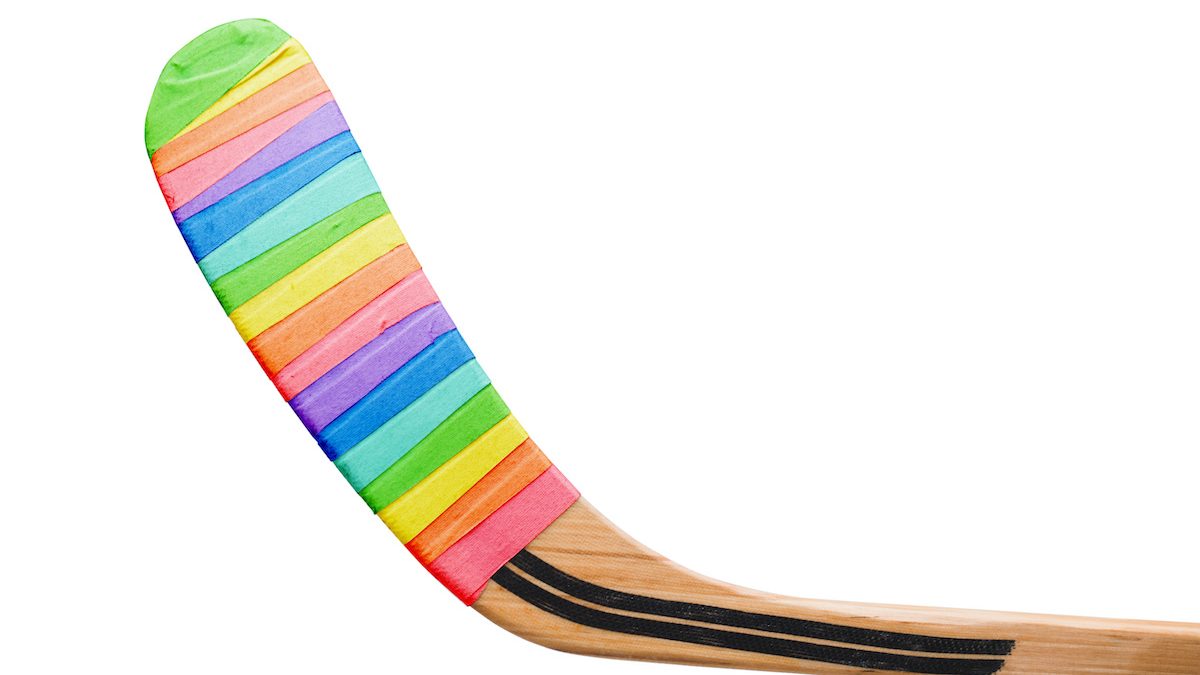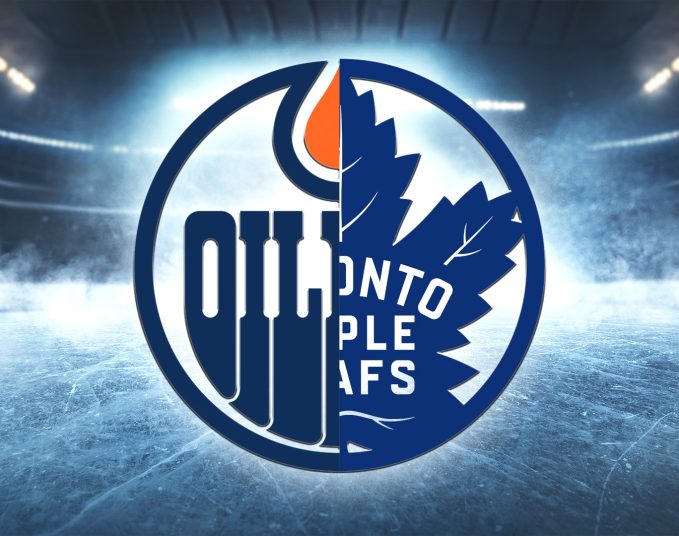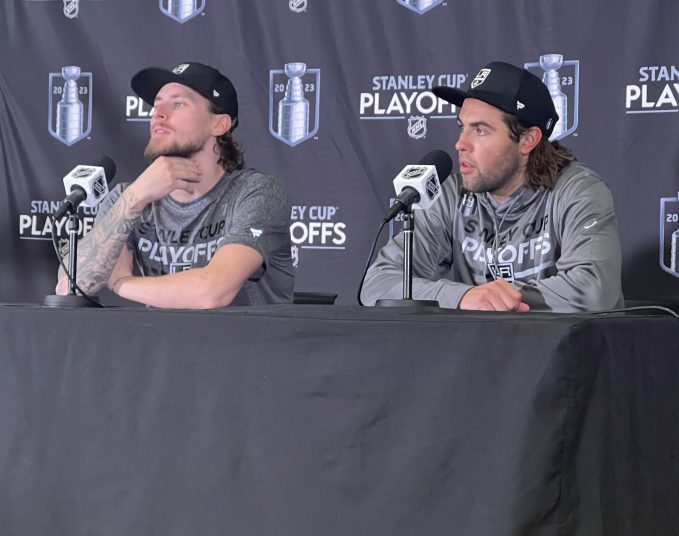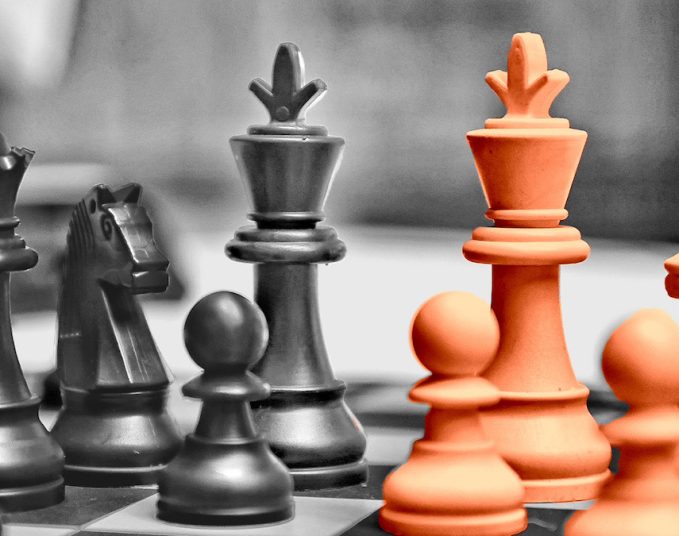The NHL season started with a sputter; before the pucks dropped in NHL rinks around North America, the media found out that the league had issued strict new policies on how teams celebrate theme nights.
No more themed warmup jerseys or visible displays of support for causes — and while most of us are focusing on how it’s affecting Pride Nights around the league, it also affects many other initiatives, from Indigenous-themed warmup jerseys to possibly even those camo outfits that honour the military.
We already knew the Pride jerseys were done. Over the summer, the league announced that those themed jerseys would no longer be allowed. This came after several teams in the league had Pride Nights go horribly wrong when players refused to participate for political or religious reasons, or both. But, this week, the edict was far stronger. There would be no Pride Tape on sticks, and players would not be forced to be near any political or social cause that made them feel uncomfortable.
Maybe it wouldn’t have come to this if, instead of focusing on the small group of players — none of which we’d call superstars — we would have celebrated the 99 per cent of NHLers who supported these initiatives.
During the previous season’s Oilers’ Pride Night, Connor McDavid made a simple statement. “I feel very strongly that hockey needs to be inclusive — and include everybody.”
It was enough, right? The best player in the world made a simple acknowledgment that these sorts of efforts were worthwhile. Maybe more time should have been spent amplifying that simple statement than giving so much air time to safe, scripted statements from a few players on why they felt they couldn’t participate.
While the first, obvious target of this is the 2SLGTBQIA+ community, there are other ramifications. Russian players who support Putin or fear Putin (or both) could say nyet if a team was to have a Ukrainian heritage night.
The previous season, the Winnipeg Jets held a celebration of Filipino heritage, with themed warmup jerseys that carried the colour the Philippines’ flag. What about that?
But, why did the NHL back down? The culture of race and discrimination in hockey is something I’ve been studying in earnest for a while. In fact, I am writing a book about it, for Beacon Press in the United States. I’ve interviewed dozens of current and former players, and people who run grassroots hockey organizations across North America.
Yet, it hasn’t been easy. When I launched into my work, I thought it wouldn’t be that hard to have people talk about race and hockey. The NHL has been publicly pushing its diversity initiatives, and in 2017 hired Kim Davis to be its vice president in charge of inclusion. She’s repeatedly said that the league needs to be examined, it needs to be scrutinized. The league launched an Inclusion and Diversity advisory group, with current and former players, both male and female. It’s led by retired NHLers-turned-broadcasters Anson Carter (former Oiler klaxon!) and P.K. Subban.
Meanwhile, the Hockey Diversity Alliance had brought players of colour together to talk about the issues in the game, and to create programs for marginalized kids across the continent.
Surely, players around the league wanted to open up and talk about diversity, right? Not exactly. Hockey has a strong culture of silence. It’s why sexual assaults get covered up for years, or are never found out about at all. It’s why discussions about gender and race don’t come as easily as they should. It’s why teams protect players who won’t participate in Pride Nights. I can say this, for every player that’s agreed to talk, there’s been one that’s turned down an interview request. I’ve had players agree to interviews and bail out the day of the interview. I’ve had some teams enthusiastically ask what they can do to help (the Oilers have been helpful, in case you’re wondering). Others have politely said no, some don’t respond at all.
There still is the cloying, holdover mentality that speaking out about social issues or politics or anything outside of holding a stick somehow makes you a bad apple in the dressing room. There’s still this sense that discussions in the dressing room need to be about the game, and the game only.
The reason that hockey has such a culture of silence is because players are conditioned to keep it that way. The culture of “the room“ is so, so, strong. So, even though the NHL has a diversity and inclusion committee, there is still a reticence, amongst front offices and dressing rooms to talk about the issues at hand.There is safety and not sticking your neck out. Ironically, it is antithetical to what players do on the ice — which is look out for each other and have each other’s back.
McDavid did speak on Tuesday. “I’ve expressed disappointment in not being able to wear the various jerseys, the tapes, whatever. Whether it’s the Pride Tape or pink tape, or anything, it’s always something I’ve enjoyed. In terms of a league standpoint, is it something I’d like to see put back in place someday? Certainly. But that’s not the way it is right now.”
It was a muted criticism.
Maybe the harshest statement came from San Jose Sharks’ forward Anthony Duclair, who told San Jose Hockey Now‘s Sheng Peng:
“For me, you’re also banning Black History Month,” he was quoted. “I think we’re taking a step backwards, to be honest.”
But, for the most part, we’re not hearing a large backlash from within the league’s membership. I don’t believe it’s because players don’t care. It has a lot more to do with the fact that speaking out against a league decision somehow goes against the team that signs your cheque.
The fact is, the facelessness of the NHL has gotten worse over time. Players are even less accessible than they were 10, even 20 years ago. And this is understandable. Social media is prevalent. One soundbite, one quote taken out of context, can go viral. Players and teams are more worried than ever about the wrong thing being said. And it’s led to a hockey dressing-room culture that’s, well, pretty boring.
When I started covering hockey in the 1990s, training camp was a free-for-all. We could roam around the various areas and have plenty of chances to have one-on-one talks with players. We got to know them. We knew about their families, their favourite things to do away from the ice, the things that made them tick.
Now, it’s all so scripted. As a group, the media asks for two or three players, we gather around them in a scrum, hoping to get a question or two in each. There’s no real time for some really thoughtful discussions. And, in the media, we tend to be pretty happy with the deal — get the soundbites, inject them into our stories like missing jigsaw-puzzle pieces, and off we go to the bar down the street.
It’s so formal and scripted and, well, unoriginal. It offers teams and players protection from tougher questions, the kind of stuff that we see discussed regularly in the NBA or the NFL. Race. Issues of class disparity. Violence. Culture. And, yes, politics. We only ask when it becomes the impossible-to-miss hot topic of the day, like the jersey ban. Then it goes away and it goes back to spending way too much time debating who should be on the fourth line.
We have become so obsessed with stories that reduce hockey to math equations, to debates about expected goals and zone clearances, that we forget that the reason we love sport is because it is essentially a human pursuit. There are mistakes, there are personalities, there is always the human element that is always 100 times more interesting than xG per 60 minutes.
The culture continues on. The former player becomes the scout or the assistant coach. Then he becomes the head coach, maybe the general manager. The team president. Players also become agents. Some go on to mentor young players. Some go into the media. So, it doesn’t just recycle itself on the team or league side, it also propagates in the people who are supposed to be critics of the game. They all remember how to stay within the lines, and they pass that culture down to the next generation. So, the cycle of silence constantly renews itself.
And, it’s killing the game.
Savvy AF. Blunt AF. Edmonton AF.




